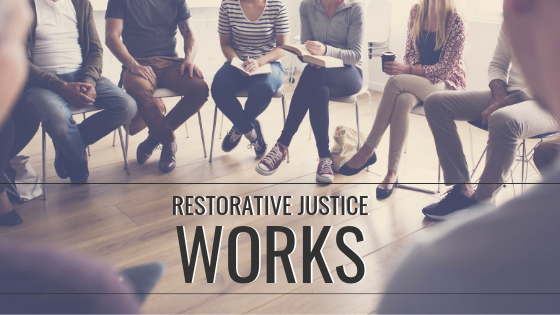Restorative Justice Works

There are many ways to resolve conflict. Dependent on the situation, one of the most effective techniques for healing relationships is to utilize our unique Restorative Justice process. At the Center for Dispute Settlement, our work is informed by our 45+ years of experience of working with parties in high conflict situations. Our Transformative approach recognizes that people want to change conflict with others from destructive to constructive; this distinguishes our Restorative Justice work from other techniques.
A Restorative Justice approach- as opposed to the traditional perpetrator-focused approach- is a victim-centered process designed to address the harm caused by the action of others (offenders). Our restorative work allows for those most impacted by the actions of the offenders to have input into how to make things right. A “Circle”, conducted by highly skilled circle keepers, and attended by victims or victim representatives and the offender(s), guides the process of addressing Accountability, Impact and Healing.
This very successful victim-centric process contains three key elements:
Accountability
Before proceeding with a Restorative Justice Circle the circle keepers evaluate the willingness of the offender(s) to accept accountability for their actions so as to minimize the risk of re-traumatizing the victims. Once this can be established a RJ Circle can be conducted, this occurs with participants seated in a circle.
Impact
Participants will be asked questions related to the incident, the impact that the incident had on them and what it would take to make the situation right again.
Healing
Once all participants have expressed themselves the healing process begins.
This process, dependent on the number of participants, normally takes between 2 to 3 hours. Restorative Justice primarily offers the victims direct opportunity to define the steps it will take to “make things right” and obligates the accountable offender(s) to make reparations as determined by those closest to the harm. It also serves to avoid isolating the offender(s) but prompts re-engagement with in lieu of out of school suspensions for students or incarceration for criminal defendants.
Are you interested in learning more about this successful way to resolution or the Center for Dispute Settlement? We’d love to talk, connect with us today!



